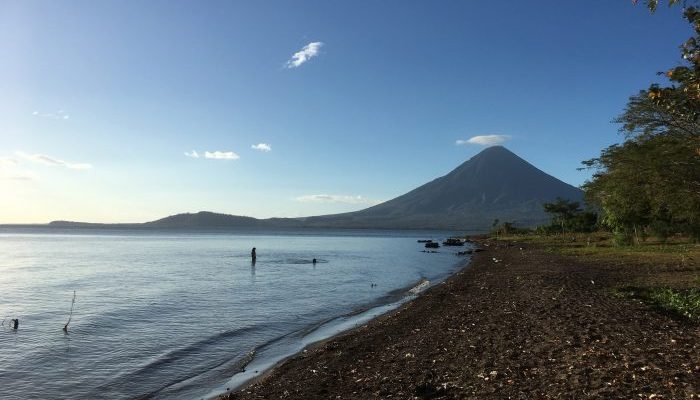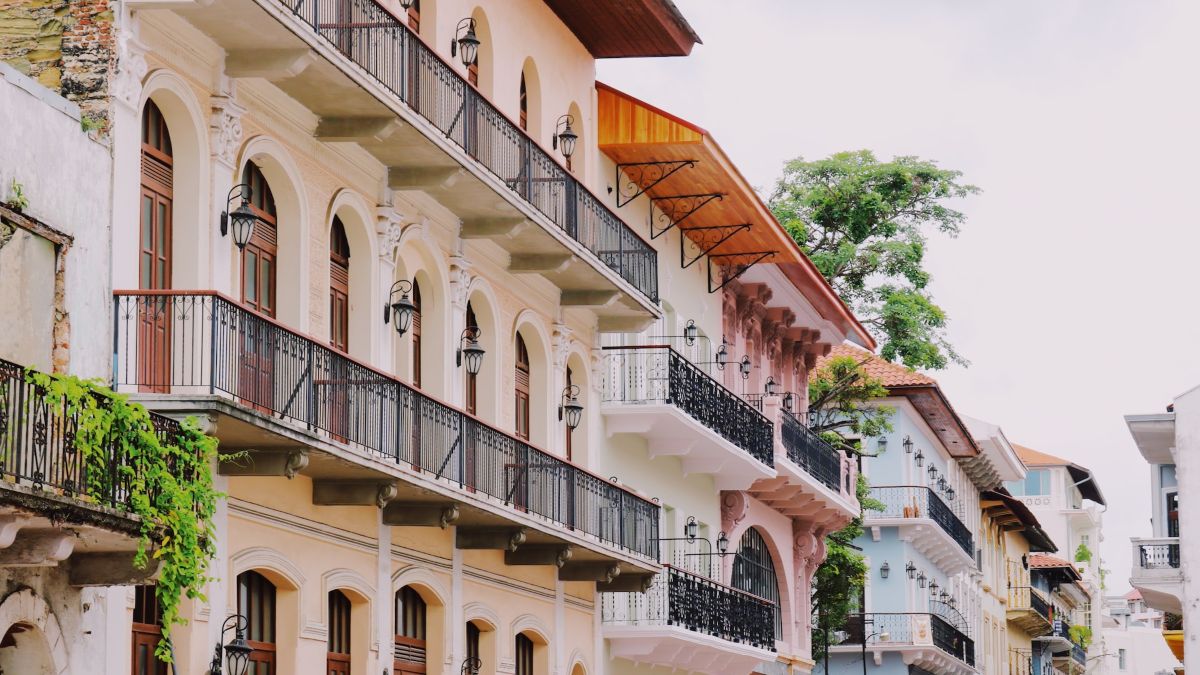“Out of the midst of the beautiful Lake Nicaragua spring two magnificent pyramids, clad in the softest and richest green, all flecked with shadow and sunshine, whose summits pierce the billowy clouds. They look so isolated from the world and its turmoil – so tranquil, so dreamy, so steeped in slumber and eternal repose. What a home one might make among their shady forests, their sunny slopes, their breezy dells, after he had grown weary of the toil, anxiety, and unrest of the bustling, driving world.”
A young Mark Twain wrote those words in December 1866 during a voyage from San Francisco to New York City.
He had sailed to San Juan del Sur on the Pacific coast of Nicaragua. From there, he made the short hop over to the shores of Lake Nicaragua, where he boarded a steamer to the Caribbean.
He would continue eastward and write his travelogue classic The Innocents Abroad, the bestselling book of his lifetime, and one of the bestselling travel books ever.
Getting to Ometepe
Twain only passed by Ometepe while crossing the lake. He never actually visited the island. But one could forgive a modern visitor for thinking the boat they are on might be the same one that ferried Twain 150 years ago.

I inched my car onto the battered ferry, Rey de Cocibolca, and was directed into place by a two-man team that – through an energetic mix of whistleblowing, shouting and arm waving – guided me into position in front of a Toyota pickup truck, and only inches from the side of the starboard edge of the car deck.
Upon exiting my car, I noticed all work and noise had stopped as two deckhands slowly and deliberately carried on board a small coffin that could not have held the body of anyone older than three years old.
Following the coffin was a grieving woman of around 30, holding a scarf pressed against the front of her face to catch her tears.
Two steps behind her walked a man moving in the jerking stagger of one oblivious to the world around him and absorbed in his agony. Arms hanging limply at his sides, he wore a checked shirt, jeans, and a cowboy hat, doing his best to maintain a stoic face. His eyes though belied his emotions, and I could not look him in the face so I averted my eyes like everyone else as they passed into the lower cabin of the ferry.
Life and commerce must continue though. After a moment, the whistles, shouts and frantic gesticulations began again as another battered Japanese pickup began to back onto the ferry. This one was laden with what appeared to be nothing but pineapples. Enough pineapples to feed the island for at least a few days it seemed.
Entering the cabin, I hesitatingly looked around but did not see the benighted parents or their funeral burden. Someone had found a cabin of some sort for them, a relief not only for them but also for us.
The crossing to Ometepe from that point was uneventful.
It takes about an hour to cross from the mainland departure point of San Jorge to the main island town of Moyogalpa. The route from San Jorge to the alternate arrival port of San José takes another 20 minutes more. To the modest annoyance of my wife, I had, through an error of omission, booked passage to San José, not Moyogalpa. So, after a serene 80-minute voyage, we berthed at the dock.
Driving on Ometepe
Realizing we were now 20 minutes late for an appointment in Moyogalpa, I pulled onto the main road circling Ometepe with the intent of driving fast.

The realities of driving in Nicaragua soon manifested themselves in the form of around forty cows taking up both lanes of the road, walking straight towards us. A vaquero on a horse rode behind them, whip in hand, shouting. We pulled to a stop and the cows parted around us, treating our Nissan like a rock in the middle of a river of bovine flesh. The vaquero waved as he passed on his short-legged horse, his smile revealing a row of gold-outlined teeth, and we continued to Moyogalpa.
Rum and weed
Moyogalpa, the principal settlement on Ometepe, is a modest town.
Gaily-painted concrete buildings and streets made of interlocking concrete blocks move up the hill in a gentle rise about six blocks from the lakeshore.

We parked and immediately ran into an American woman whom we had met in Granada the week before. We ask if she has seen the real estate agent we are scheduled to meet and she mentions she has seen him a few times that day, driving around the town.
She then confides to us that she has just brought in a bumper crop of marijuana and has to head home to make sure that her tenant doesn’t smoke it all. She then says she is not too concerned, as her tenant is usually halfway through a bottle of Flor de Caña rum by this point in the day, but she better check anyway.
A peek at my watch reveals it is not yet 11:00 AM.

Do we want to live on Ometepe?
We spend the rest of the day driving across rutted washed-out roads with our real estate agent. He’s an American man of almost 60 who seems to shout the last word of each sentence. He has been on the island for several years and tells us that he has yet to learn the last names of most of the other foreigners living there.
“Kinda tells you something about them, if you know what I mean,” he says. “Seems like a lot of them maybe don’t want to be found!”
After some unconvincing sales pitches about various properties, “Guy who owns this place went crazy! Had to go back to Denmark on a stretcher!” we decide Ometepe may not be the place for us to invest.
At the end of the day
We drive across the strip of land connecting the two volcanoes that make up the island and find a small hotel to stay for the princely sum of $12.
The family that runs the hotel sit downstairs watching game shows at high volume on an enormous television. They constantly swat swarming insects with electrified one-quarter sized tennis rackets.
Walking across the main road and down a narrow dirt path takes us to the lake shore. A solitary fisherman struggles to pull his wooden fishing boat out of the water for the night. I lend him a quick hand while his meager catch flaps listlessly in the bottom of his punt.

The sunset paints a magenta hue to the side of the southernmost volcano.
Later, we lie in hammocks upstairs and sip cans of Toña while listening to the roosting birds and the breeze through the trees.
A tranquil end to another lovely day in Nicaragua. Only semi-spoiled by a blaring television program and the constant ZAP! ZAP! ZAP! of an electrified insect massacre, one floor below.
Related:
- Buying A Car In Nicaragua
- Driving In Nicaragua: My First Accident
- Driving In Honduras: A Traveler’s Tale
- An Expat Ode To Leon, Nicaragua
- Boats, Cars, Taxies, Buses, And Planes: Getting Around Belize
- What Country Has The Best (And Worst) Roads In Central America?
Jake Stamp is a native of Carmel Valley, California with a tendency to wax rhapsodic about his many years of living in Guatemala and extensive travels throughout the rest of Central America. He currently divides his time between Santa Cruz, California and Antigua Guatemala.




